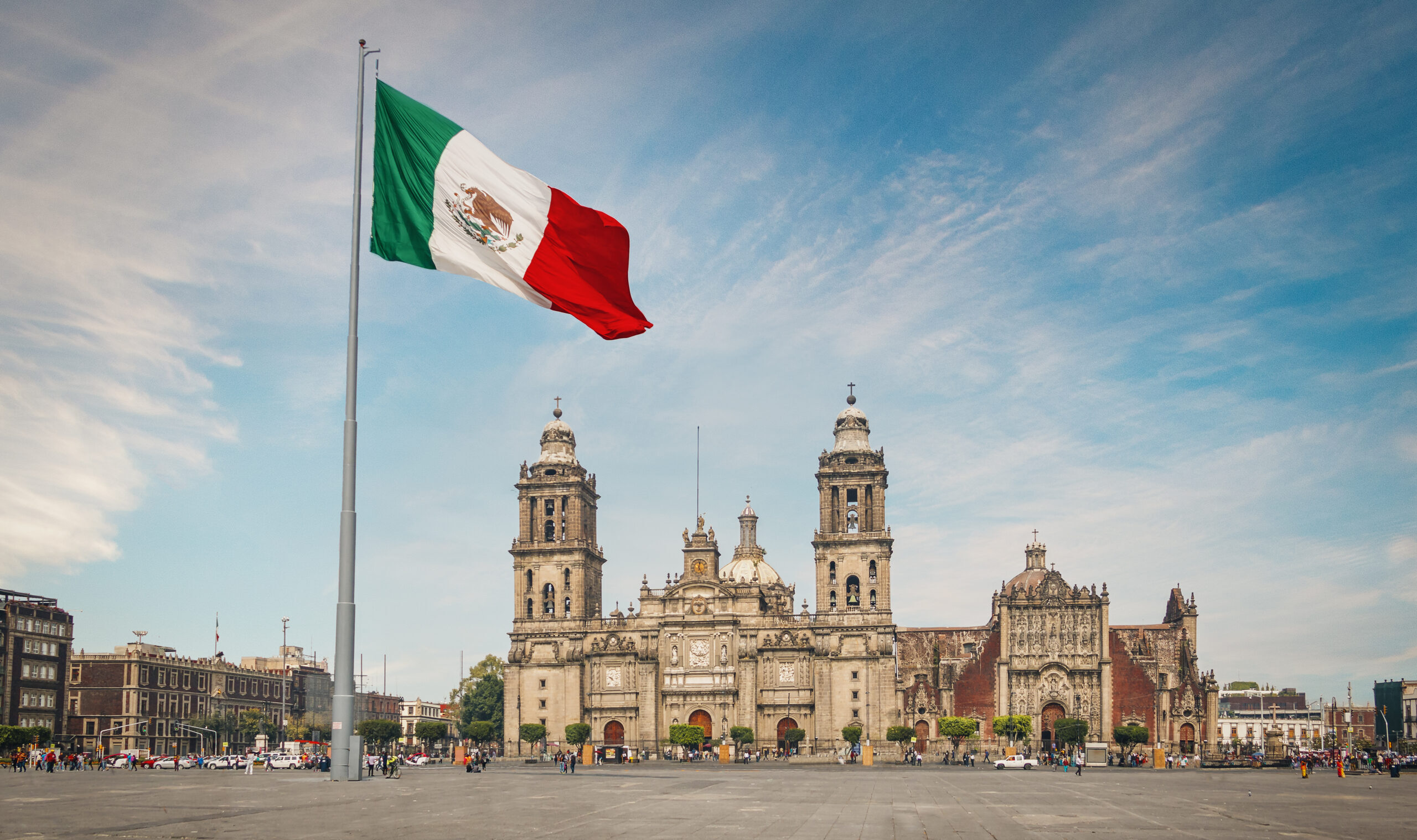Mexico and Canada Deserve Tariffs
Free trade must be a two-way street. The post Mexico and Canada Deserve Tariffs appeared first on The American Conservative.

Mexico and Canada Deserve Tariffs
Free trade must be a two-way street.

On November 25, 2024, President Trump announced his intention to impose a 25 percent blanket tariff on imports from Canada and Mexico if the countries did not halt the flow of illegal aliens and drugs into the United States. Free traders everywhere clutched their pearls, warned of rising avocado prices, and gleefully imagined the deprivation of Americans who voted for Trump in the hope of lower inflation. The awesome coercive power of tariffs became manifest when Prime Minister Justin Trudeau flew to Mar-a-Lago. Meanwhile, Mexico’s new leftist president, Claudia Sheinbaum, begrudgingly admitted that high-level talks on border security were underway.
A tariff is a fulcrum that can move nations. As the world’s largest export market, the United States holds an enormous, if underused, degree of leverage over its trading partners. Just the threat of limiting their access to the American market is often enough to bring them to the negotiating table. The second Trump administration must use this capacity to chasten our neighbors. Restoring U.S. territorial sovereignty is perhaps the most central and laudable aim of the second Trump administration. But it must not be the only aim of the administration’s trade policy with respect to Canada and Mexico. Indeed, if the administration is serious about leveling the global playing field for American businesses and workers, there’s no better place to start than our own backyard.
Canadian and Mexican exporters enjoy largely duty-free access to the U.S. market, but American exporters do not enjoy the same level of access to its neighbors’ markets. Since NAFTA came into effect in 1994, Canada and Mexico have extracted more value from American consumers than they have provided to American businesses. Every year since 1995, the United States has run a trade deficit with both countries. The current balance of trade greatly favors Mexico and Canada. Canada and Mexico each send around 75 percent of their total exports to the United States, while American exports to both markets combined comprises only about 30 percent of the U.S. total.
Canada and Mexico deliberately exploit America’s economic openness through policies that defy the expectations of a free-trade pact. In Canada, the resilient remnants of its longstanding protectionist policies still shield politically favored domestic industries from American competition. Mexico, by contrast, maintains few formal trade barriers but excludes foreign firms with an industrial policy toolkit including nationalization. Neither are reliable partners in any kind of economic security framework to counter Chinese influence; much must be done to enable U.S. firms to flourish elsewhere in the USMCA, as the others have done. Canada and Mexico deserve U.S. tariffs.
Imposing tariffs on imports from Canada may seem unnecessary to many as Americans tend to see it as a non-threatening, familiar ally and close trading partner. The justification for tariffs is simple. Canada actively restricts imports from the United States and Mexico to protect certain sectors. Under a system known as “supply management,” Canada strictly limits the share of its domestic market available to U.S. poultry and dairy exporters. Any imports exceeding Canada’s dairy and poultry tariff-rate quotas may face tariffs as high as 300 percent for some dairy products and 285 percent for poultry. These tariffs are so prohibitive that U.S. exports never exceed the quotas. America’s attempts to open the Canadian markets have yielded minimal results.
The USMCA increased the share of U.S. imports in the Canadian dairy only from 3.25 percent to 3.6 percent and changed the poultry quotas from its once-standard 7.5 percent rate to a floating quota based on supply and demand. American farmers enjoy no comparable protection at the market level under USMCA, although Canada’s official tariff regime is limited to a few sectors under this so-called free trade agreement. American farmers forego billions in potential export income while Canadians face no such obstacles selling to the United States. The USMCA’s toleration of this blatantly unfair trading arrangement belies its inherent insufficiency as a free trade agreement.
A reciprocal tariff on Canadian dairy and poultry exports is well within the realm of possibility. For example, the United States has already imposed retaliatory tariffs, also known as countervailing duties, on Canadian softwood lumber exports, which the Canadian government subsidizes so producers can sell at below-market prices. The countervailing duties on softwood lumber have only risen as the Canadian government has maintained its subsidies, so reciprocity alone is unlikely to effect a change.
The political obstacles to abolishing supply management are staunch. Canada’s heavily consolidated dairy cartel wields considerable influence in Ottawa. Supply management is a sacred cow, unmolested by any of Canada’s major political parties, just as ethanol subsidies once were in the United States. In 2022, the Canadian Parliament considered a bill that would have exempted the supply management system from any future trade negotiations. Supply management predates free trade between Canada and the United States and may outlast it.
Canadian protectionism stems from the country’s historical resistance to economic integration with the United States. The former Canadian Prime Minister John Turner best encapsulated this view in a 1988 debate with his free-trader rival, Brian Mulroney: “We built a country east and west and north. We built it on an infrastructure that deliberately resisted the continental pressure of the United States. For 120 years we’ve done it.” Turner’s vision of the Canadian economy evaporated when free trade came to Canada amid the neoliberal turn of the 1980s. Though NAFTA erased most trade barriers erected by generations of Canadian policymakers, a few of these prohibitive barriers remained.
In recent decades, Canada’s contributions to the economic security of North America have been largely negative. Only recently has the Canadian government reversed course on its open-door immigration policy and started imposing trade restrictions and curtailing Chinese investment activity. Canada has even imposed tariffs of its own on Chinese imports. But all these changes may be too little and too late. By the mid-2010s, Chinese buyers had already acquired a third of Vancouver’s real estate market and 15 percent of Toronto’s. Chinese mining firms have continued to funnel investment to projects in Quebec. Even less licit forms of Chinese economic activity permeate the Canadian market. In February, the Swiss newspaper NZZ reported that Vancouver’s triads were heavily involved in laundering the money of Chinese nationals in Canada.
Mexico presents a similar quagmire where government policy has worked against U.S. interests in the context of free trade. Having zeroed out most of its tariffs on American and Canadian imports, Mexico does not impose trade restrictions to the same degree as Canada. The absence of tariffs on both sides of the southern border allowed Mexico to expand its exports to the United States, while politically favored firms enjoy government ownership instead of a regulated oligopoly. Lower labor costs allowed U.S. producers to offshore advanced manufacturing to Mexico. Mexico’s largest exports to the United States are now high value-added manufactured goods, namely cars and computers, products that can and should be made here. By contrast, Canada supplies the largest share of our petroleum imports and raw materials, including most U.S. aluminum imports.
Mexico has designed its trade policies to maximize its trade surplus with the United States. Notably, Mexico has the lowest de minimis threshold in the USMCA. Any shipment exceeding $117 may be subject to import duties in addition to a 16 percent value-added tax. Of course, this primarily affects lower value goods. But at scale, this low threshold makes it harder for American exporters to sell such products into Mexico; Mexican exporters can sell much more easily into the United States where duties are only levied on shipments worth more than $800. Moreover, Mexican exporters can fragment larger shipments into smaller ones that pass under the threshold.
Beyond mere trade rules, Mexico marshals state-owned enterprises and proactive nationalization campaigns to crowd or drive out foreign investors, in addition to other measures. Mexico’s tenuous economy nationalized in 1938. Pemex is a state-owned enterprise encompassing the country’s entire oil and gas sector. Management of Pemex has only grown more concentrated since the populist government of President Andres Manuel Lopez Obrador (AMLO) reversed reforms that had opened Pemex up to some private investment, including from Americans. The AMLO administration also nationalized most of the country’s power generation capacity and all lithium mining, displacing foreign owners and investors to forge new government-owned monopolies.
Mexico may be our trading partner, but it is decidedly not our ally. Over the past six years of rule by AMLO’s Morena Party, the Mexican government has been very eager to cozy up to China. In contrast to its $152 billion trade surplus with the United States in 2023, Mexico’s trade deficit with China reached $62 billion that year. This surplus speaks to China’s growing role in the Mexican economy, where it has, for instance, become Mexico’s largest supplier of vehicles; BYD, its EV titan, is slated to build factories, as of November 2024. Under mounting U.S. and Canadian pressure, Sheinbaum’s ostensible response to Mexico’s growing dependence on Chinese imports has been to commit to a program of import-substitution industrialization, a Latin American specialty with a poor track record.
Even as Sheinbaum gestures at the border or acknowledges concerns about China, the outlook for American businesses in Mexico seems to grow ever more troubled. In late November 2024, the Mexican Senate eliminated seven independent regulatory agencies autonomy and political independence, purportedly to cut costs. American businesses exporting to the country will be increasingly beholden to the caprices of Mexico’s leftist government, which has abandoned the concepts of independent regulators and an independent judiciary. The loss of political independence in Mexico’s regulators is reason enough to reevaluate continuing the free-trade pact. A credible threat to abrogate the USMCA and exclude Mexico from any subsequent U.S.-Canada trade agreement could help chasten Mexico’s ruling party.
President Trump’s promised tariffs would mark a decisive shift away from the permissive trade regime that has persisted since NAFTA, and which lets Mexico and Canada cheat while Americans play by the rules. The imposition of President Trump’s blanket tariffs on Canadian and Mexican imports would essentially mean the end of the USMCA, just as the narrower trade conflicts with Mexico and Canada in 2018 hastened the replacement of NAFTA. In taking this course, the second Trump administration must be prepared to part with the USMCA, which the first administration unfortunately overhyped, and embrace an economic order that prioritizes market access for American producers.
While precise rates and exemptions can be sorted out later, it remains apparent that the United States should impose much broader tariffs, those tried-and-true instruments of economic statecraft, not only to secure the compliance of Mexico and Canada but to steward economic relations with our neighbors. Tariffs appear especially urgent insofar as they might precipitate the renegotiation of USMCA to eliminate carveouts such as supply management, disrupt state-owned enterprises, and impose more uniform regulations suited to U.S. businesses. Mexico and Canada have showed no qualms about molding the system to their advantage. It’s time for America to reciprocate.
The post Mexico and Canada Deserve Tariffs appeared first on The American Conservative.
What's Your Reaction?
















